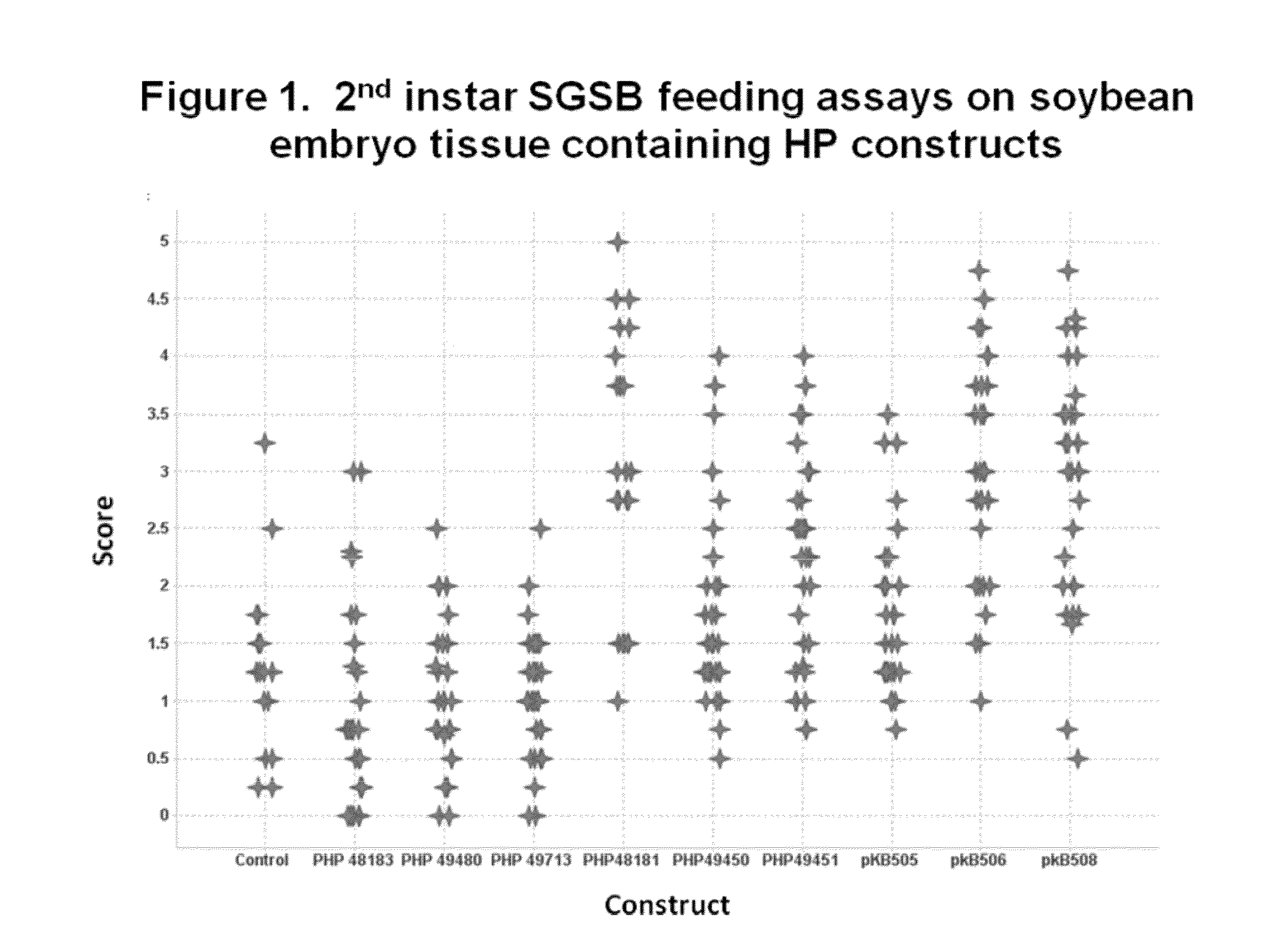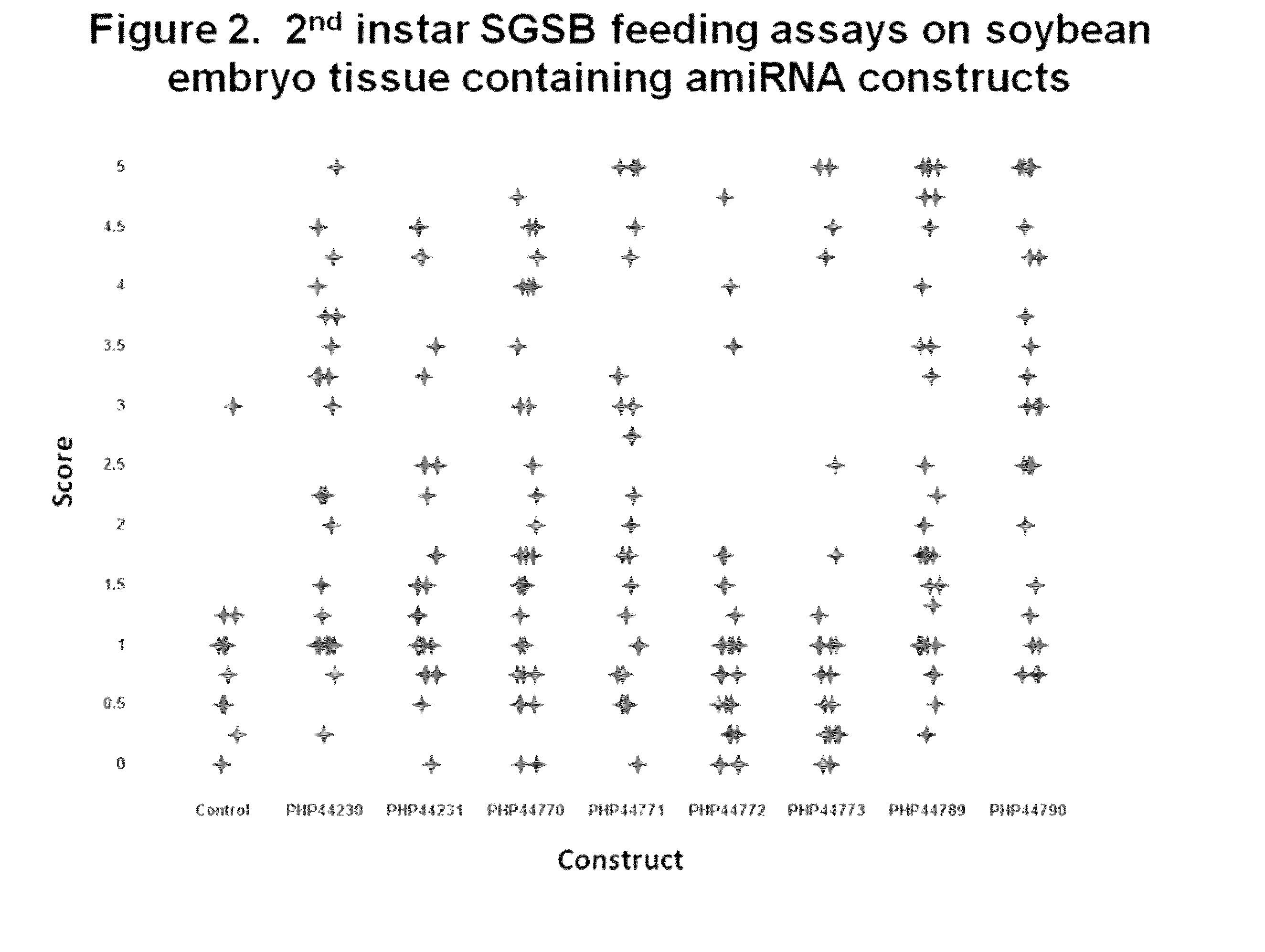Compositions and methods for insecticidal control of stinkbugs
a technology of stinkbugs and compounds, applied in the field of molecular biology and gene silencing to control pests, can solve the problems of destroying millions of acres of staple crops, $100 billion dollars in crop damage, and serious problems of insect pests, and achieves the effect of reducing the level of a target sequence, controlling the pest, and reducing the level of the target sequen
- Summary
- Abstract
- Description
- Claims
- Application Information
AI Technical Summary
Benefits of technology
Problems solved by technology
Method used
Image
Examples
embodiment 3
4. The expression cassette of embodiment 3, wherein said polynucleotide is expressed as a double stranded RNA.
5. The expression cassette of embodiment 3, wherein said polynucleotide comprise a silencing element which is expressed as a hairpin RNA.
embodiment 5
6. The expression cassette of embodiment 5, wherein the silencing element comprises, in the following order, a first segment, a second segment, and a third segment, wherein
[0134]a) said first segment comprises at least about 19 nucleotides having at least 90% sequence complementarity to a target sequence set forth in SEQ ID NOS: 279, 302, 281, 304, 280, 283, 282, 303, 278, 284, 285, 286, 287, 288, 289, 290, 291, 292, 17, 30, 34, 14, 18 or 263;
[0135]b) said second segment comprises a loop of sufficient length to allow the silencing element to be transcribed as a hairpin RNA; and,
[0136]c) said third segment comprises at least about 19 nucleotides having at least 85% complementarity to the first segment.
embodiment 6
7. The expression cassette of embodiment 6, wherein said target sequence comprises the sequences set forth any one of SEQ ID NOS: 284, 285, 286, 287, 288, 289, 290, 291, 292, 337, 338, 339, 340, 341, 342, 343 or 344 or a sequence having at least 90% sequence identity to SEQ ID NOS: 284, 285, 286, 287, 288, 289, 290, 291, 292, 337, 338, 339, 340, 341, 342, 343 or 344.
8. The expression cassette of embodiment 6, wherein said expression cassette comprises any one of SEQ ID NOS: 293, 294, 295, 296, 297, 298, 299, 300, 301, 321, 322, 323, 324, 325, 326, 327 or 328.
9. The expression cassette of embodiment 3, wherein said polynucleotide is flanked by a first operably linked convergent promoter at one terminus of the polynucleotide and a second operably linked convergent promoter at the opposing terminus of the polynucleotide, wherein the first and the second convergent promoters are capable of driving expression of the polynucleotide.
10. A host cell comprising a heterologous expression cass...
PUM
| Property | Measurement | Unit |
|---|---|---|
| Temperature | aaaaa | aaaaa |
| Temperature | aaaaa | aaaaa |
| Temperature | aaaaa | aaaaa |
Abstract
Description
Claims
Application Information
 Login to View More
Login to View More - R&D
- Intellectual Property
- Life Sciences
- Materials
- Tech Scout
- Unparalleled Data Quality
- Higher Quality Content
- 60% Fewer Hallucinations
Browse by: Latest US Patents, China's latest patents, Technical Efficacy Thesaurus, Application Domain, Technology Topic, Popular Technical Reports.
© 2025 PatSnap. All rights reserved.Legal|Privacy policy|Modern Slavery Act Transparency Statement|Sitemap|About US| Contact US: help@patsnap.com


